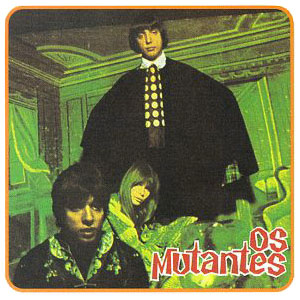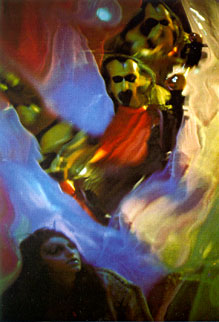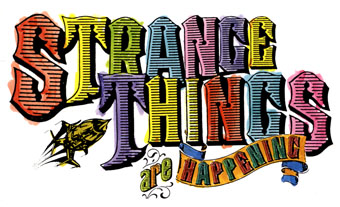The New York Times finally gets hip to the new folk/weird America thing.
Arthur receives a passing mention.
By WILL HERMES
Published: June 18, 2006
ASA IRONS of the Vermont musical collective Feathers is stroking his beard. It is formidable beard; a biblical beard. He and his band mates—who mainly operate out of a rural farmhouse without cellphones, Internet, manager or booking agent—are at WNYC radio to perform their enigmatic, pixie-ish folk-rock on the long-running show “Spinning on Air.” Today their instruments include a lap harp, a toy xylophone, a Middle Eastern hand drum and an acoustic guitar hand-painted with animals and rainbows.
Ruth Garbus, a dark-eyed 24-year-old whose T-shirt depicts tractors flying through space, is talking about conjuring mystery with music, “that whole psychedelic thing of letting your mind go where it will.” Mr. Irons, 24, his long hair tied up in a bun, chimes in with a story about working as a carpenter and about growing up with parents who were “woods hippies, not town hippies.”
“I’m all about the old world, man,” Mr. Irons says with a mischievous laugh.
Perhaps. But he and his band mates are also about a new world: one of the most creatively vigorous strains of underground music. Initially dubbed “freak folk,” it looked like a trend of the moment a couple of years ago, when two California artists, Joanna Newsom and Devendra Banhart, attracted attention with charmingly shaggy, deceptively whimsical, largely acoustic albums.
But the scene they spearheaded has grown steadily and expanded sonically, getting less folkie and more, well, freaky. It has also gone international. And this season—the Summer of Love 2.0—it comes into full, wild bloom with releases, tours and festival appearances that promise nothing less than a new age of Aquarius.


 ANNOUNCING THE AKASHIC RECORD DVD SERIES – A BASTET EXCLUSIVE
ANNOUNCING THE AKASHIC RECORD DVD SERIES – A BASTET EXCLUSIVE
